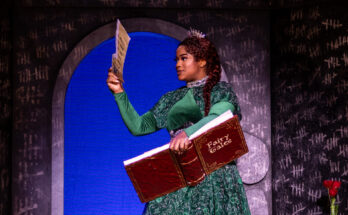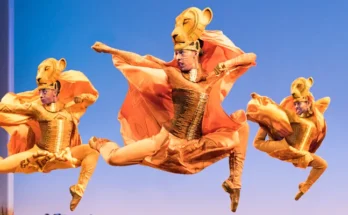Nutcrackers have been around at least since the time of the ancient Greeks. It is rumored that the Greek philosopher Aristotle invented the first lever-operated nutcracker around 330 B.C. Based on the plethora of bronze nutcrackers discovered in ancient gravesites, early civilizations must have thought nutcrackers useful tools in life and death. England’s King Henry VIII gave second wife Anne Boleyn a decorative wooden nutcracker as a gift in the 1500s. But, the colorful nutcrackers we now associate with Christmas didn’t exist until the 18th century, and were the product of German craftsmen.
In Germany, nutcrackers weren’t just practical tools, they were totems said to protect families from danger. Their big wooden teeth were designed to scare away evil spirits, and their ability to crack nuts symbolized the circle of life: A tree drops a seed (nut), which becomes a tree, out of which the nutcracker is born. The nutcracker, by design, also was a form of satirical political commentary. Nutcrackers made in the image of high-ranking officials, kings and soldiers were a way to force high-status men to “serve” the people. For example, Napoleon may have won battles in Germany, but he was helpless in the hands of the German people, who made the little general’s likeness the most popular nutcracker design of its time.
In the 19th century, nutcrackers began being sold as children’s toys in Christmas markets. The most popular designs during this time were harlequins and soldiers. One of these soldier nutcrackers became the protagonist of E.T.A. Hoffman’s novel The Nutcracker and the King of Mice , which subsequently inspired Tchaikovsky’s Nutcracker Suit e and The Nutcracker ballet.
In America, the nutcracker as a collector’s item first gained popularity in the 1950s, when American GIs returning from Germany brought the colorful nutcrackers home with them. During the same period, The Nutcracker ballet’s popular success also sparked interest in the colorful wooden toy.
Today, two German manufacturers are the best-known nutcracker producers: Steinbach and Christian Ulbricht. Steinbach’s styles range from contemporary pop icons (Star Wars ‘ Yoda) to historic figures (Stonewall Jackson) and literary icons (Alice in Wonderland). Ulbricht’s styles are more traditional, but also feature historical figures, such as Albert Einstein. Both companies offer a Nutcracker Suite series. Prices range from $55 for a 5-inch miniature to $400 for a 2007 signed, limited-edition 17-inch nutcracker.
Where to buy:
The Atlanta Ballet sells limited edition Nutcracker-themed nutcrackers in the Fox Theatre lobby during performances of the ballet. Nutcrackers also are available at Neiman Marcus in Lenox Square, 3393 Peachtree Rd. NE, Buckhead; and Nordstrom in Perimeter Mall, 4390 Ashford Dunwoody Road NE, Dunwoody. For more information and online retailers, visit magicofnutcrackers.com , ulbricht.com or kurtadler.com .




A good website to purchase nutcrackers and other great german Christmas items is Bestofchristmas.com